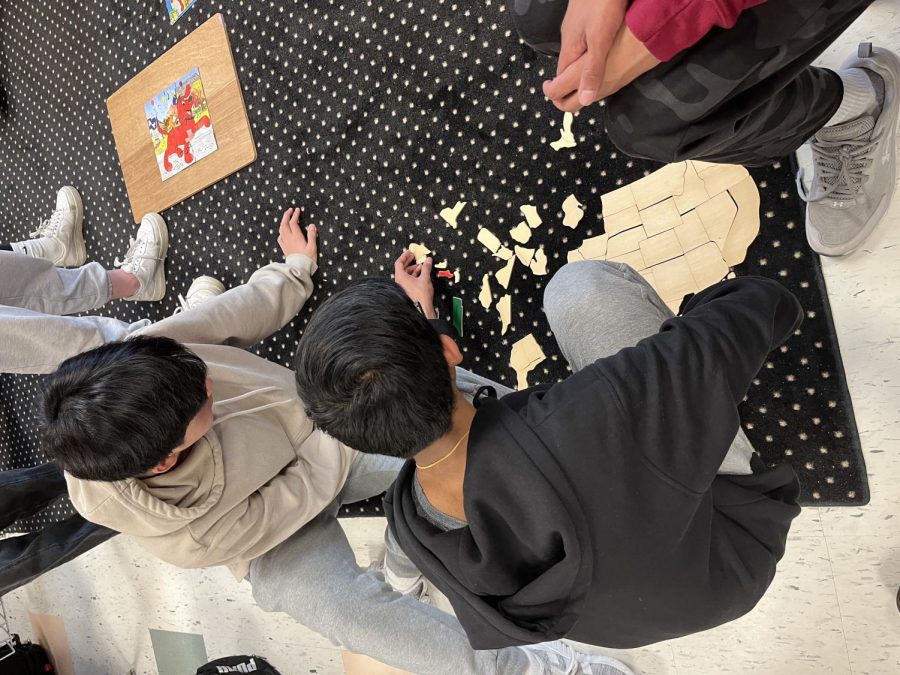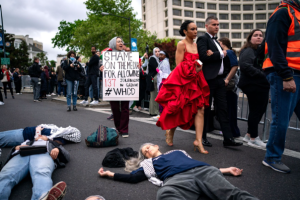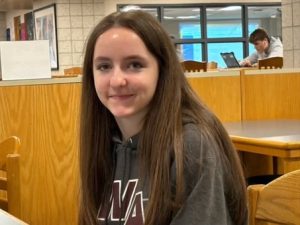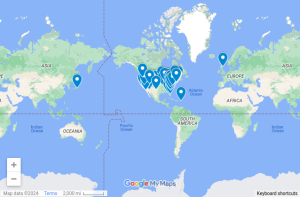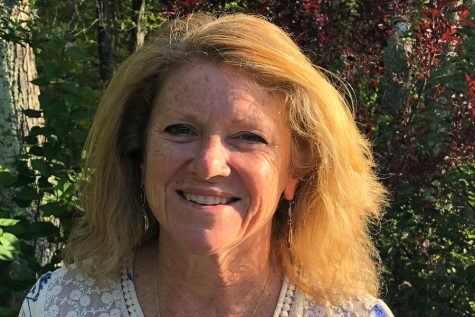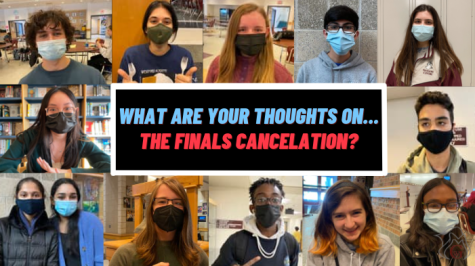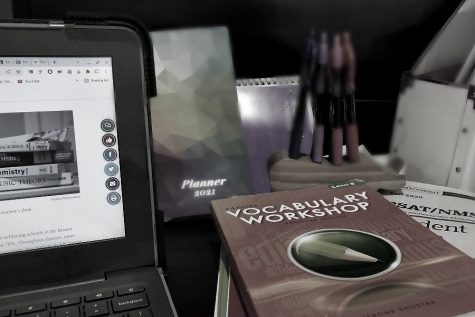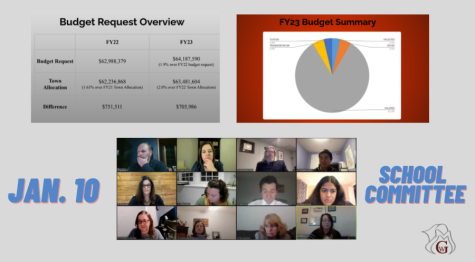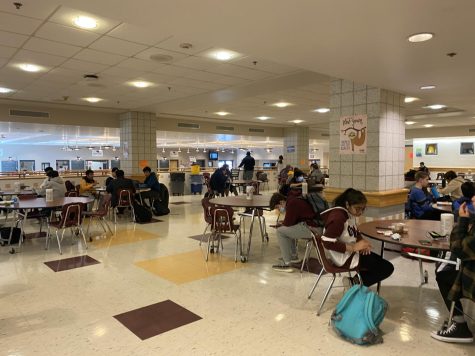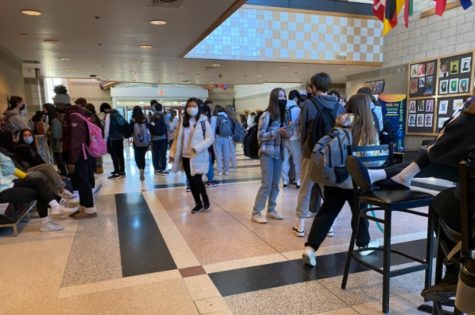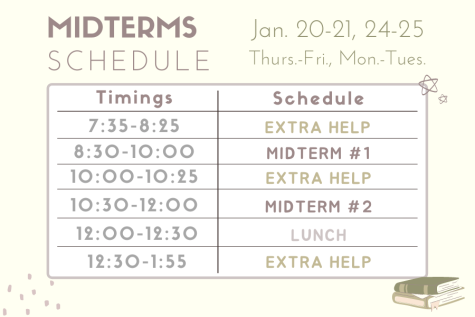Michael Martell teaches social emotional learning to students
U.S. History teacher Michael Martell’s honors history class solves a puzzle made by another group in the class.
February 6, 2023
As a result of new technology and social media, present-day teens have struggled noticeably with more mental health issues than past generations. Students nowadays cannot seem to turn the digital versions of their social lives off, and it drains them. In order to address this issue, 10th grade honors U.S. History teacher Michael Martell begins to introduce the idea of social-emotional learning skills.
Over the past few weeks, he has put students in groups and assigned them to one of five topics, which include self-management, self-awareness, social awareness, responsible decision-making, and relationship skills. The objective of each group is to teach a social-emotional learning skill to others in the class. Martell’s hope was that students would be able to identify some skills to better cope with social and emotional stressors.
One of Martell’s favorite presentations out of these groups was a puzzle that a group learning about responsible decision-making put together. The idea was for students to understand how to make responsible decisions and see the effects of the choices they make. If students can understand this, they can apply it to their life outside of school.
Another one of Martell’s favorite presentations was a maze that a self-awareness group came up with. The group set up an in-classroom maze and the group they were presenting to was blindfolded. Students had to successfully make their way through the maze while being timed. The objective was to be aware of one’s surroundings at all times. Martell believes that out of all of the social emotional learning skills, self-awareness is the most important one.
“Without self-awareness, it would be very difficult to recognize any of the other facets of social or emotional learning,” Martell said.
Even presentations as simple as musical chairs delivered a strong message. In one of Martell’s honors classes, one group set up musical chairs for the other group to play. The idea behind this was to understand rules and restrictions in life. This game delivered that message on a much smaller scale.
“I liked this project because it was a fun and engaging way to learn about these important skills that I don’t typically think about,” sophomore Erin Keefe said.
Although this project was fun, it had an important objective behind it. Over the past few years, more students have been struggling with mental health problems. Identifying students stressors and figuring out ways to cope with them could turn things around in the future. There have been many assets to the decline in mental health.
“Currently, one of the biggest stressors is social media and the augmentation of that through COVID. When I was a kid it was much different, kids nowadays cannot seem to turn their social lives off. So students social and emotional wellbeing has noticeably declined,” Martell said.
As a result, he believes that classes should teach about social emotional learning for the foreseeable future, or until students’ wellbeing is back where it should be. However, there should be a balance of this teaching; it deserves attention, but there also needs to be a way to balance it in the classroom.
“Teachers often get caught up in having a certain amount of curriculum to teach. In today’s societies and classrooms, there is a place for social and emotional learning. If teachers understand the best ways to incorporate it, it can be helpful,” Martell said.

